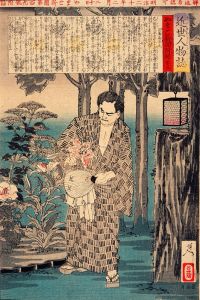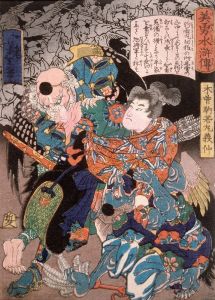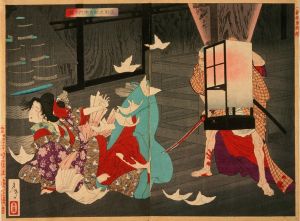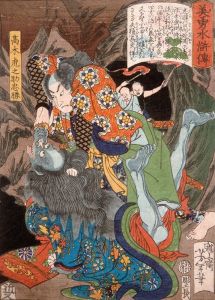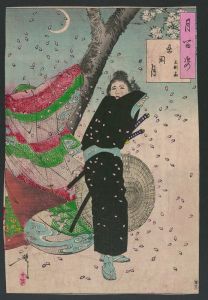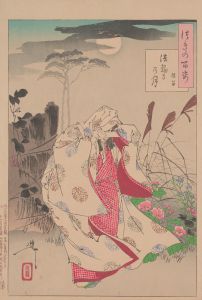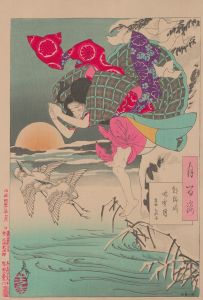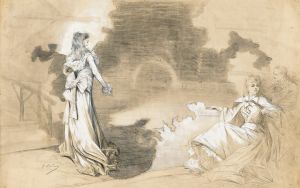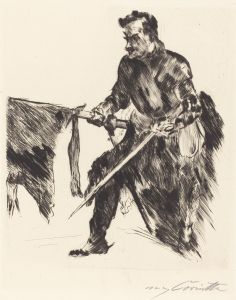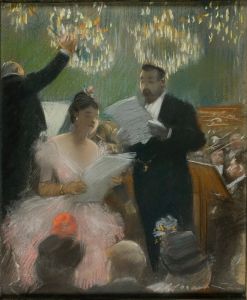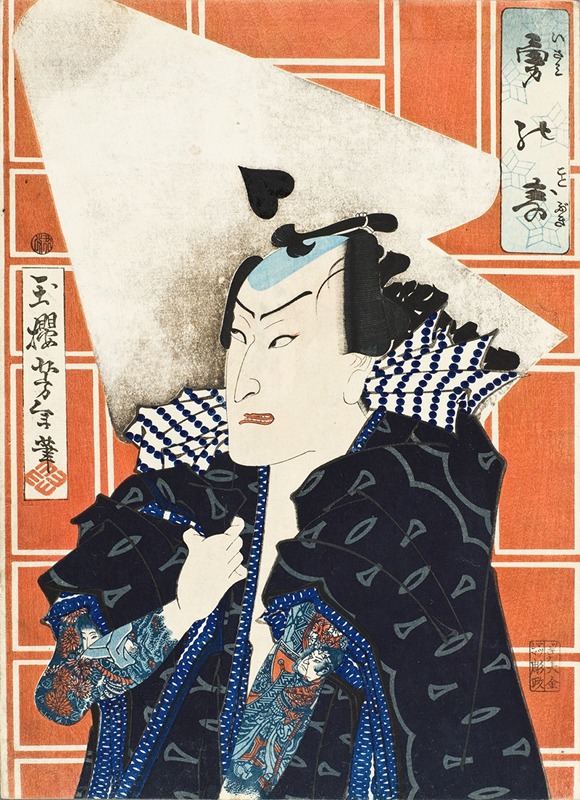
The Actor Nakamura Shikan IV and the Se troupe
A hand-painted replica of Tsukioka Yoshitoshi’s masterpiece The Actor Nakamura Shikan IV and the Se troupe, meticulously crafted by professional artists to capture the true essence of the original. Each piece is created with museum-quality canvas and rare mineral pigments, carefully painted by experienced artists with delicate brushstrokes and rich, layered colors to perfectly recreate the texture of the original artwork. Unlike machine-printed reproductions, this hand-painted version brings the painting to life, infused with the artist’s emotions and skill in every stroke. Whether for personal collection or home decoration, it instantly elevates the artistic atmosphere of any space.
"The Actor Nakamura Shikan IV and the Se troupe" is a woodblock print by the renowned Japanese artist Tsukioka Yoshitoshi, who was active during the late Edo and early Meiji periods. Yoshitoshi is celebrated for his innovative approach to traditional ukiyo-e art, and his works often reflect the cultural and social changes occurring in Japan during his lifetime. This particular print is part of Yoshitoshi's extensive body of work that captures the dynamic world of kabuki theater, a popular form of Japanese drama known for its stylized performances and elaborate costumes.
Nakamura Shikan IV was a prominent kabuki actor of the 19th century, known for his versatility and skill in portraying a wide range of characters. The Nakamura family is one of the most distinguished lineages in kabuki theater, with a history that spans several generations. Shikan IV, like many actors of his time, was celebrated not only for his performances but also for his ability to adapt to the evolving tastes of kabuki audiences.
The Se troupe, to which Nakamura Shikan IV belonged, was one of the many theatrical troupes that performed kabuki plays across Japan. These troupes were integral to the dissemination and popularity of kabuki, as they traveled and brought performances to various regions, thus contributing to the cultural tapestry of the period.
Yoshitoshi's depiction of Nakamura Shikan IV and the Se troupe is a testament to his keen interest in the performing arts and his ability to capture the essence of kabuki theater. His prints often highlight the dramatic expressions and intricate costumes of the actors, providing a vivid glimpse into the theatrical world of the time. Yoshitoshi's work is characterized by its attention to detail and the use of vibrant colors, which bring his subjects to life and convey the emotional intensity of the performances.
The print is also significant in the context of Yoshitoshi's career, as it reflects his transition from traditional ukiyo-e themes to more modern and diverse subjects. During the Meiji period, Japan was undergoing rapid modernization and Westernization, and Yoshitoshi's work often bridges the gap between the old and the new, preserving traditional Japanese culture while also embracing contemporary influences.
Yoshitoshi's contributions to the art world extend beyond his kabuki prints. He is perhaps best known for his series "One Hundred Aspects of the Moon" and "Thirty-Six Ghosts," which showcase his mastery of storytelling through visual art. His work remains influential, and he is regarded as one of the last great masters of the ukiyo-e tradition.
In summary, "The Actor Nakamura Shikan IV and the Se troupe" by Tsukioka Yoshitoshi is a significant piece that captures the vibrant world of kabuki theater during a transformative period in Japanese history. Through his detailed and expressive style, Yoshitoshi offers a window into the cultural and artistic landscape of 19th-century Japan, celebrating the enduring legacy of kabuki and its performers.





